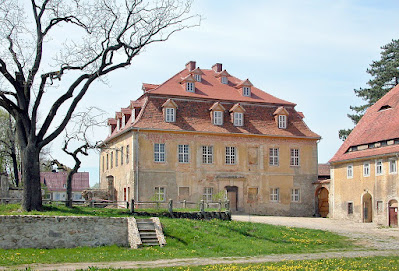1727 Herrnhutt Revival
In the early 18th century, Europe was going through a period of religious decline, as the Enlightenment had brought about a questioning of traditional religious beliefs and practices. However, in 1727, a remarkable event occurred in the small town of Herrnhutt in Germany, which would become known as the Herrnhutt Revival. This revival had a profound impact on the religious landscape of Europe, and its effects are still felt today.
Herrnhutt was a small village in Saxony, Germany, founded by a group of Protestant refugees from Moravia who had fled persecution in their homeland. The group was led by Count Nicholas Ludwig von Zinzendorf, a devout Christian who believed in the importance of personal spiritual experience and the need for religious revival. Under his guidance, the refugees established a community in Herrnhutt, where they could worship freely and live according to their beliefs.
The community at Herrnhutt was unique in many ways. It was a mixture of different Protestant denominations, including Lutherans, Calvinists, and Moravians, who had put aside their theological differences to form a united Christian community. They also emphasized the importance of personal piety and spiritual experience, rather than rigid adherence to dogma or doctrine. This emphasis on personal experience would prove crucial in the Herrnhutt Revival.
The revival itself began on August 13, 1727, during a meeting of the community's small choir. As the choir sang hymns and prayed together, a powerful sense of the Holy Spirit descended upon them. The members of the choir felt an overwhelming sense of love and unity, and many experienced visions and mystical experiences. This event would later become known as the "Morning Watch," and it marked the beginning of a spiritual awakening in Herrnhutt.
Over the next few weeks and months, the revival spread throughout the community at Herrnhutt. People began to gather for prayer meetings, where they would share their spiritual experiences and pray together. Many experienced profound emotional and physical reactions and some claimed to have seen visions of heaven or hell, or to have heard the voice of God speaking to them.
The Herrnhutt Revival also had a profound impact on the community's social structure. The community had always been committed to equality and community, but the revival deepened these values. Members of the community began to see each other as brothers and sisters in Christ, rather than as members of different denominations or social classes. They began to share their possessions and resources, and to work together for the common good.
The revival at Herrnhutt would eventually spread beyond the community's borders, as people came from all over Europe to witness the spiritual awakening taking place there. Count Zinzendorf himself traveled extensively, spreading the message of the revival and establishing new communities of believers. The Herrnhutt Revival would go on to have a profound impact on the religious landscape of Europe, inspiring new movements of Christian renewal and leading to the formation of the modern Protestant missionary movement.




Comments
Post a Comment